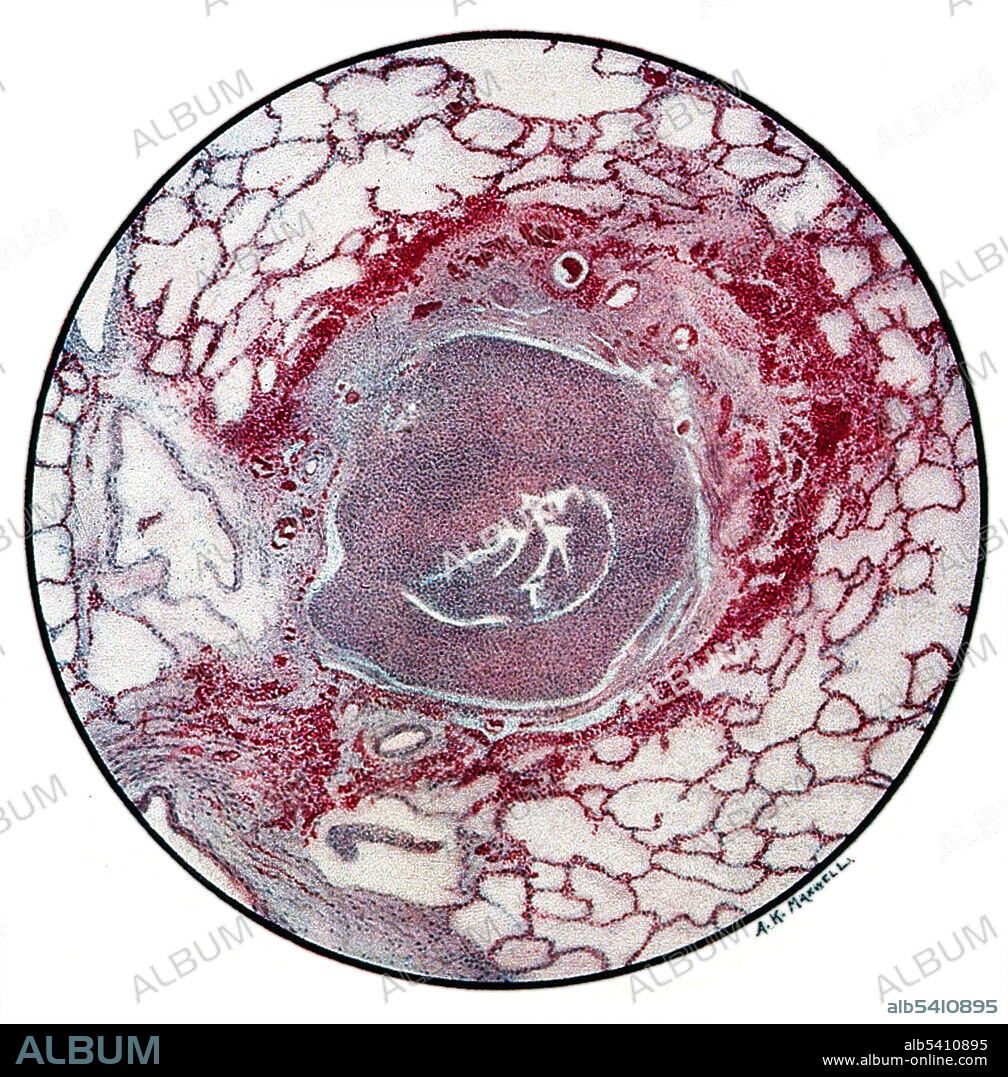alb5410895
Mustard Gas Poisoning in Lung,1917

|
Add to another lightbox |
|
Add to another lightbox |



Title:
Mustard Gas Poisoning in Lung,1917
Caption:
Drawing of a microscopic section of lung tissue damaged by mustard gas poisoning during World War I. The patient died at the end of the second day, 40 hours after the attack. Drawing by A. Kirkpatrick Maxwell, 1917. The bronchiole is filled with fibrin and pus cells, and its lining epithelium has been completely destroyed. The inflammation has caused a characteristic ring of hemorrhage in the tissues around the bronchial tube, and infection is beginning to appear in the alveoli nearest to the these inflamed tissues. Sulfur mustard, commonly known as mustard gas, was first used effectively in World War I by the German army against British and Canadian soldiers near Ypres, Belgium, in 1917 and later also against the French Second Army.
Credit:
Album / Science Source / Wellcome Images
Releases:
Model: No - Property: No
Rights questions?
Rights questions?
Image size:
2400 x 2437 px | 16.7 MB
Print size:
20.3 x 20.6 cm | 8.0 x 8.1 in (300 dpi)
Keywords:
1917 • 1ST WORLD WAR • 20 XX TWENTIETH CENTURY • 20TH CENTURY • 20TH • DISEASE • FIRST WORLD WAR • HISTOLOGY • HISTORY • INFECTION • INFLAMMATION • LUNG TISSUE • MEDICAL • MEDICINAL • MICROSCOPIC DRAWING • MUSTARD GAS • POISONING • SULFUR MUSTARD • TOXIN • TWENTIETH CENTURY • WORLD WAR I (1914-18) • WORLD WAR I • WORLD WAR ONE • WWI
 Pinterest
Pinterest Twitter
Twitter Facebook
Facebook Copy link
Copy link Email
Email

